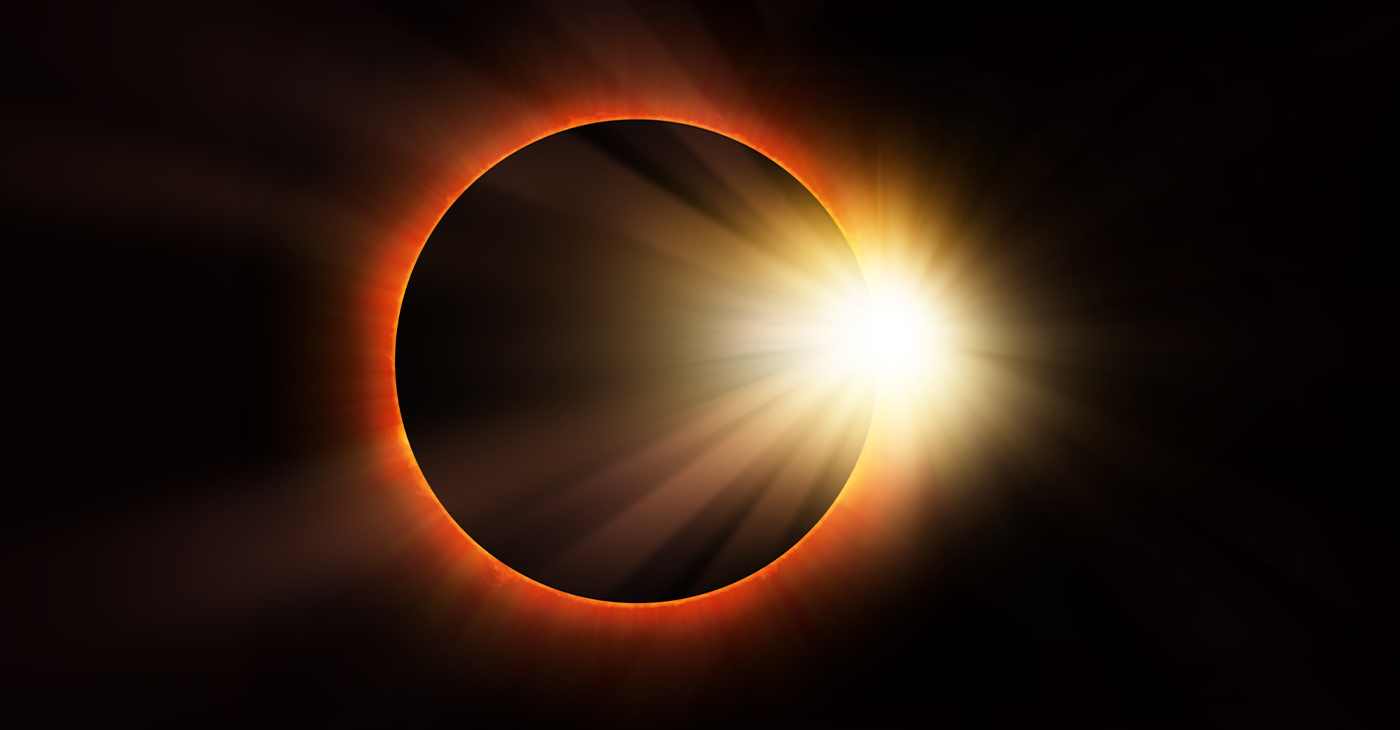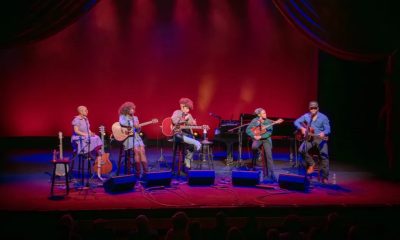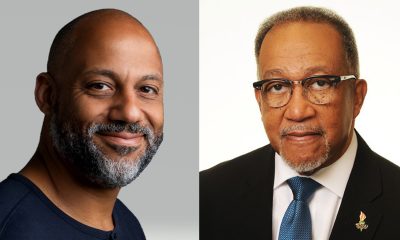Commentary
COMMENTARY: Black Tech Genius Is All Around Us
THE AFRO — Black genius is all around us. It is inescapable. We see it in our neighborhoods. We see it in our schools. We see it in our churches.
Black genius is all around us. It is inescapable. We see it in our neighborhoods. We see it in our schools. We see it in our churches. Black genius is sitting at the dinner table in plain sight.
You know those shows you like to binge watch and those GIFS we all can’t live without? We wouldn’t have them without the pioneering work of a Black woman named, Lisa Gelobter.
With her own personal flavor of Black girl magic and a degree in computer science from Brown University, Gelobter has completely changed the way information and entertainment are produced and consumed around the world.
You can also thank a Black man by the name of Mark E. Dean for being able to watch GIFs and videos in color. In addition to leading the team that designed IBM’s first personal computer, Dean created the first color computer monitor. With a degree in engineering from the University of Tennessee, Dean took the digital age from black and white to full color.
And did you know that before Bill Gates, Africa had Philip Emeagwali? Originally from Nigeria, Emeagwali moved to the United States where he obtained a B.A. degree from the University of Oregon and earned two Master’s degrees from schools in Washington, D.C. While this Black genius is known as the “Bill Gates of Africa,” it wasn’t Gates who developed
the world’s first supercomputer – it was Emeagwali.
Black genius is not just now guiding us into the future of technology – it has been the future for a while.
So, it’s no surprise that the next great tech hub in the United States is being built in an area with one of the largest concentrations of Black communities and Black talent in the nation.
Amazon should recognize this as it begins to build its HQ2 in Crystal City, Virginia, just a river jump away from the nation’s capital.
Washington, D.C. is the “East Coast” answer to the “West Coast” Silicon Valley. We’ve watched D.C. steadily emerge into a well-known incubator of start-ups. From federally funded IT and defense projects to major innovation sector titans like Amazon who are pitching tents throughout the region: D.C., Maryland and Virginia (or “#DMV” as it’s affectionately known) has evolved into a region also defined by tech giant HQs in Northern Virginia to the biotechnology laboratories extending from Montgomery County to Baltimore.
This should sound like great news for Black folks in the DMV area, a region that is nearly 30 percent Black in population composition. Washington, D.C. itself is just barely majority Black at 48 percent of the city-wide population and neighboring Prince George’s County (Maryland’s second largest) is nearly three quarters Black. Baltimore, Maryland is also a majority African-American city. And as the region’s technology corridor grows, so do parallel efforts from school systems and area universities (some of the top in the world) to produce more graduates with “STEM” (science, technology, engineering and mathematics) degrees.
Yet, the entire National Capital region still suffers from high Black unemployment rates and low wages.
What could easily solve this problem? Obviously, the burgeoning tech industry in the region. Still, for a number of reasons, the tech industry hasn’t yet received the message that there is a deep well of Black digital genius ready and waiting to take on these roles.
Let me take a minute to boast Howard University, my Alma Mater. Howard University is an innovative leader in STEM fields. Howard is a top producer of undergraduate African American students who eventually earn a Ph.D. in STEM-oriented subjects. Let that sink in!
As D.C.-area WTOP News recently reported, “Information Technology (IT) professionals can write their own ticket right now, with a nagging shortage of talent restricting U.S. information technology job growth despite high demand.”
According to the WTOP report, Mark Roberts, CEO of TechServe Alliance, blames the country’s inability to fill IT jobs on a lack of talent-supply in STEM fields. He is quoted as saying, “Despite robust demand in many IT skill sets, we simply do not have enough qualified IT professionals.”
Really? Something’s not adding up. Especially when Amazon will need 50,000 more of those professionals.
If there is high unemployment in, for example, D.C.’s Black community – where the Black jobless rate, according to the D.C. Fiscal Policy Center, is nearly five times the national rate at 14 percent – then that should naturally match high demand for IT employees. Why isn’t Black talent being tapped to cross this bridge?
Complaints of a “shortage” suggest that while the area is flooded with Black folks looking for employment opportunities, they don’t have the proper training required to access those opportunities. In other words, the tech corridor has an education pipeline problem.
In a U.S. News ranking of the best STEM high schools in the United States, Maryland boasted 9 of them. Still, these schools aren’t opening doors for Black students as much as they could. Of the 13,761 students afforded the opportunity to attend one of these nine schools, only 1,218 are Black. Maryland’s Black population is nearly 35 percent, including
a massive presence of African and Caribbean migrants. But the Black population of the top STEM schools in Maryland is less than 9 percent.
There’s your pipeline problem.
To access positions in STEM fields through the National Capital region, “talent” must be formally trained and certified. This usually comes from accredited colleges and universities. If there is a lack of trained professionals available in STEM fields, it would follow that there was a lack of people interested in being trained in those fields.
But a closer look at institutions – such as the University of Maryland, for example – proves that there is an abundance of interest in advanced STEM degrees. In fact, there is so much interest the university has employed questionable gatekeeping methods on their graduate programs to ensure that people are actively fenced out.
According to the University, “Certain majors are very popular and require a limit on the number of students they can accommodate and are designated Limited Enrollment Programs (LEP). Students in an LEP major must successfully complete a specific set of courses, or ‘gateway’ requirements by the semester in which they earn 45 credits.” Computer Science and Engineering are both LEP programs.
That is why it’s now, more than ever, crucial for regional Black communities to develop creative ways to circumvent the clogged tech sector pipeline. Especially with Amazon’s HQ2 on the way. While encouraging industries, policymakers and academic institutions to recognize the diverse talent and potential employment pool they’re overlooking, we also need to mold and strengthen our own community organizations, religious institutions and schools (from K-12 to regional HBCUs) to fill these voids left open by systemic ignorance.
There is no shortage – only a lack of will and vision. The gateway is blocking Black talent access into places like the DMV corridor. There isn’t a gap between talent and the tech industry – there is a fence. And it’s time we stop it from keeping Black genius out.
Ateya Ball-Lacy is founder/executive director of Hood Smart: The UrbanSTEMulus Project, a dynamic DC-based program that promotes increased STEAM education for Black youth in the region.
This article originally appeared in The Afro.
Activism
Oakland Post: Week of April 24 – 30, 2024
The printed Weekly Edition of the Oakland Post: Week of April 24 – 30, 2024

To enlarge your view of this issue, use the slider, magnifying glass icon or full page icon in the lower right corner of the browser window. ![]()
Activism
Oakland Post: Week of April 17 – 23, 2024
The printed Weekly Edition of the Oakland Post: Week of April 17 – 23, 2024

To enlarge your view of this issue, use the slider, magnifying glass icon or full page icon in the lower right corner of the browser window. ![]()
Commentary
Opinion: Surviving the Earthquake, an Eclipse and “Emil Amok.”
Last Friday, a 4.8 magnitude earthquake shook New York City, reported as the “biggest earthquake with an epicenter in the NYC area since 1884” when a 5.2 quake hit. A bit bigger. The last quake similar to Friday’s was a 4.9 in 1783.Alexander Hamilton felt it — 241 years ago. That’s why New Yorkers were freaking out on Friday. They were in the room where it happens.

By Emil Guillermo
I’m a Northern Californian in New York City for the next few weeks, doing my one-man show, “Emil Amok, Lost NPR Host, Wiley Filipino, Vegan Transdad.”
I must like performing in the wake of Mother Nature.
Last Friday, a 4.8 magnitude earthquake shook New York City, reported as the “biggest earthquake with an epicenter in the NYC area since 1884” when a 5.2 quake hit. A bit bigger. The last quake similar to Friday’s was a 4.9 in 1783.
Alexander Hamilton felt it — 241 years ago.
That’s why New Yorkers were freaking out on Friday. They were in the room where it happens.
And it just doesn’t happen that often.
Beyonce singing country music happens more frequently.
When I felt New York shake last week, it reminded me of a time in a San Francisco TV newsroom when editors fretted about a lack of news an hour before showtime.
Then the office carpeting moved for a good ten seconds, and the news gods gave us our lead story.
On Friday when it happened in NYC, I noticed the lines in the carpeting in my room wiggling. But I thought it was from a raucous hotel worker vacuuming nearby.
I didn’t even think earthquake. In New York?
I just went about my business as if nothing had happened. After living near fault lines all my life, I was taking things for granted.
Considering the age of structures in New York, I should have been even more concerned about falling objects inside (shelves, stuff on walls) and outside buildings (signs, scaffolding), fire hazards from possible gas leaks, and then I should have looked for others on my floor and in the hotel lobby to confirm or aid or tell stories.
Of course, as a Californian who has lived through and covered quakes in the 4 to 6 magnitude range, I tried to calm down any traumatized New Yorker I encountered by taking full responsibility for bringing in the quake from the Bay Area.
I reassured them things would be all right, and then let them know that 4.8s are nothing.
And then I invited them to my consoling post-Earthquake performance of “Emil Amok, Lost NPR Host…”
It was the night of the eclipse.
ECLIPSING THE ECLIPSE
In New York City, the eclipse was about 90 percent visible. Good enough for me. Though a full solar eclipse is a celestial rarity, blockages of any sort aren’t generally celebrated. My one-man play is about growing up with the eclipsed history of American Filipinos and how I struggle to unblock all that.
For example, did you know the first Filipinos actually arrived to what is now California in 1587? That’s 33 years before the Pilgrims arrived in America on the other coast, but few know the Filipino history which has been totally eclipsed.
I was in Battery Park sitting on a bench and there was a sense of community as people all came to look up. A young woman sitting next to me had a filter for a cell phone camera. We began talking and she let me use it. That filter enabled me to take a picture of the main event with my iPhone.
For helping me see, I invited her and her boyfriend to come see my show.
Coincidentally, she was from Plymouth, Massachusetts, near the rock that says the year the Pilgrims landed in 1620.
In my show she learned the truth. The Pilgrims were second.
History unblocked. But it took a solar eclipse.
Next one in 2044? We have a lot more unblocking to do.
If you’re in New York come see my show, Sat. April 13th, 5:20 pm Eastern; Fri. April 19, 8:10 pm Eastern; and Sun. April 21st 5:20 pm Eastern.
You can also livestream the show. Get tickets at www.amok.com/tickets
About the Author
Emil Guillermo is a journalist and commentator. He does a mini-talk show on YouTube.com/@emilamok1. He wishes all his readers a Happy Easter!
-

 Activism4 weeks ago
Activism4 weeks agoOakland Post: Week of March 27 – April 2, 2024
-

 #NNPA BlackPress4 weeks ago
#NNPA BlackPress4 weeks agoBeloved Actor and Activist Louis Cameron Gossett Jr. Dies at 87
-

 Community1 week ago
Community1 week agoFinancial Assistance Bill for Descendants of Enslaved Persons to Help Them Purchase, Own, or Maintain a Home
-

 Activism3 weeks ago
Activism3 weeks agoOakland Post: Week of April 3 – 6, 2024
-

 Business1 week ago
Business1 week agoV.P. Kamala Harris: Americans With Criminal Records Will Soon Be Eligible for SBA Loans
-

 Activism2 weeks ago
Activism2 weeks agoOakland Post: Week of April 10 – 16, 2024
-

 Community1 week ago
Community1 week agoAG Bonta Says Oakland School Leaders Should Comply with State Laws to Avoid ‘Disparate Harm’ When Closing or Merging Schools
-

 Community6 days ago
Community6 days agoOakland WNBA Player to be Inducted Into Hall of Fame























































